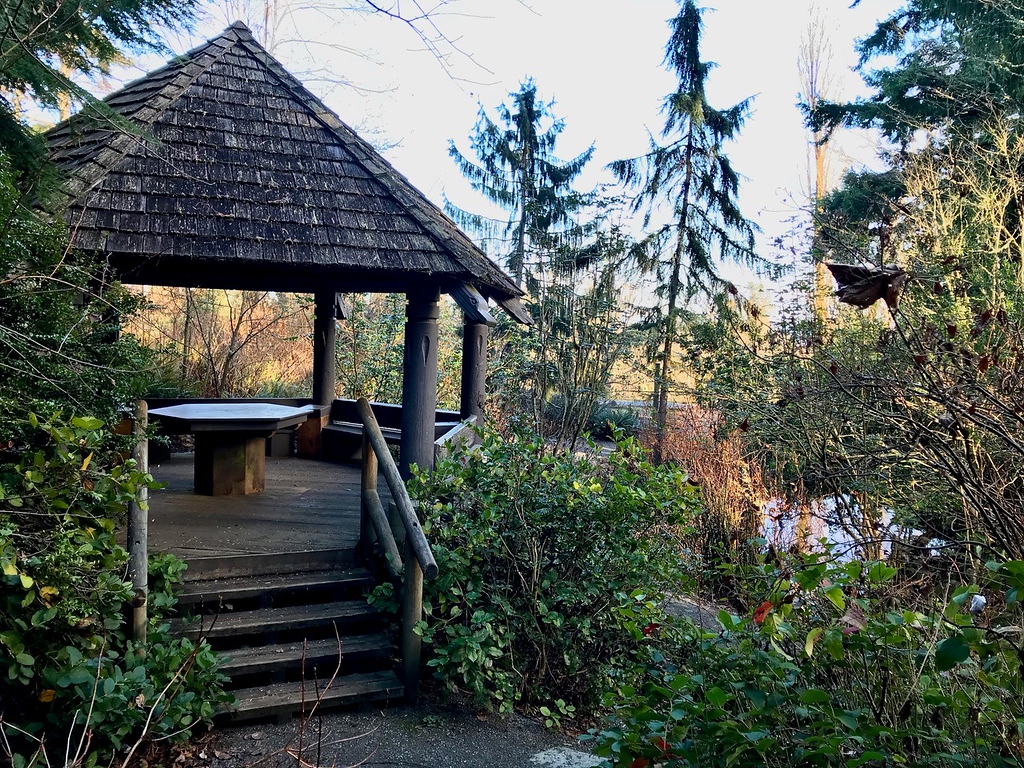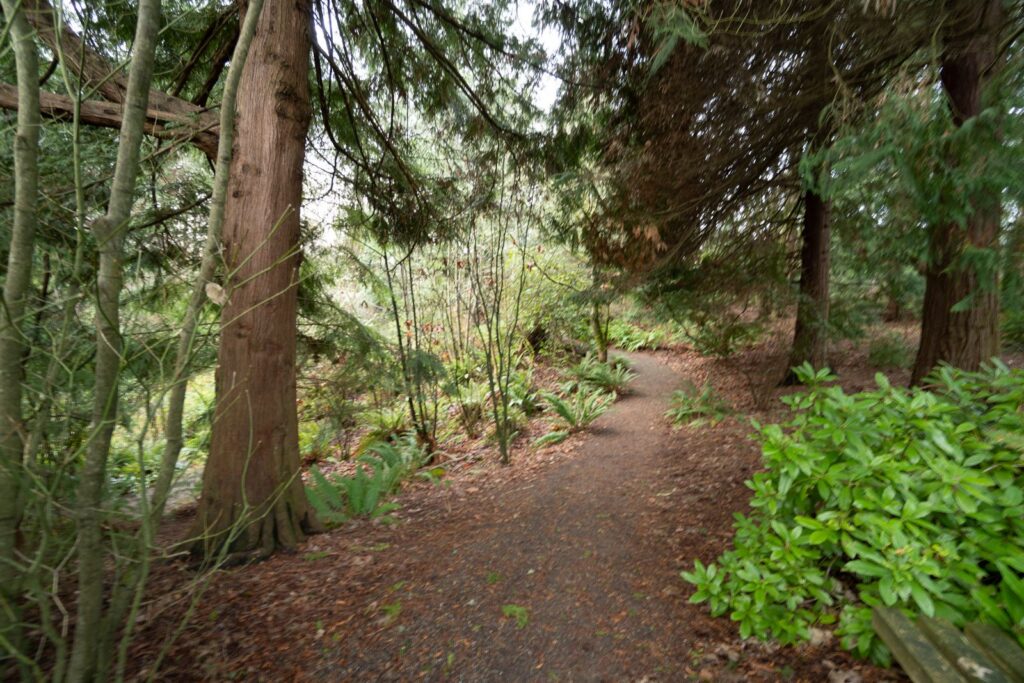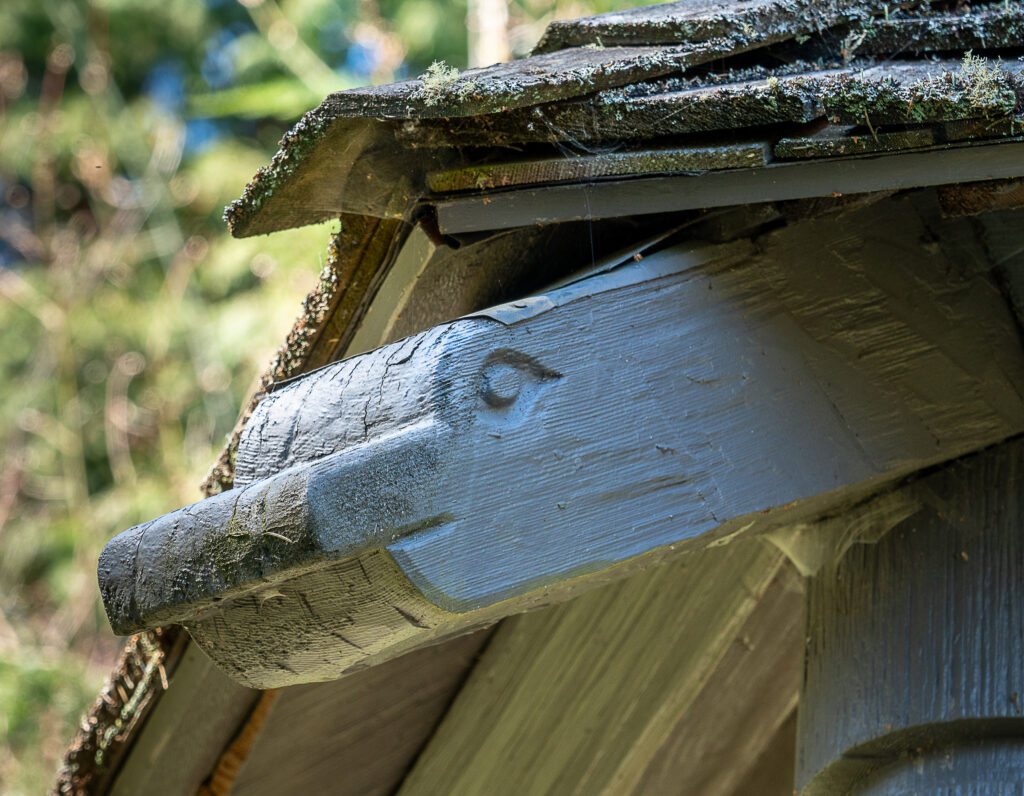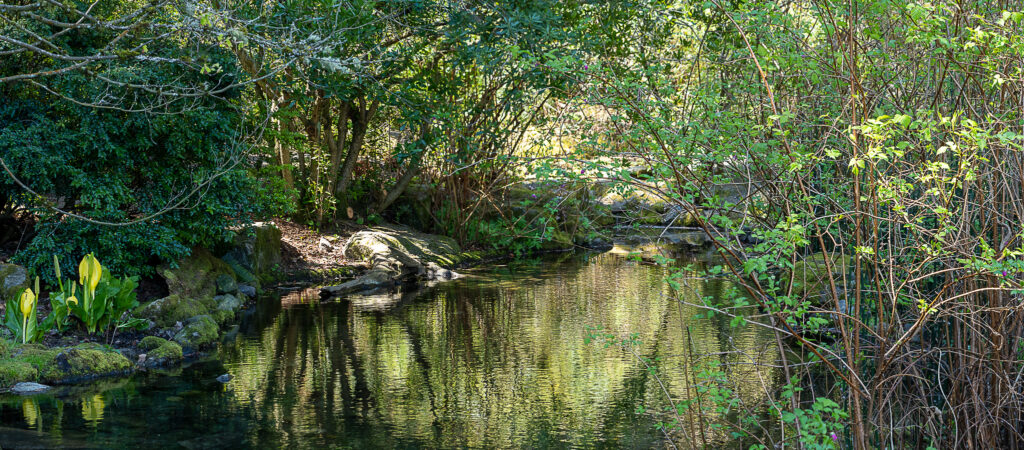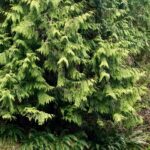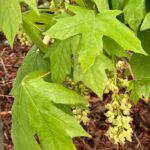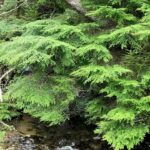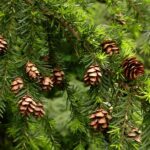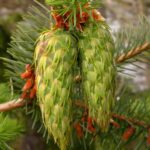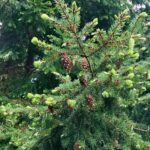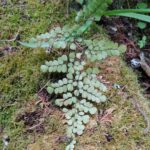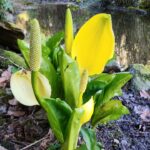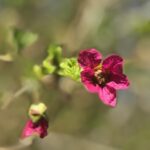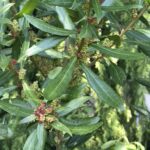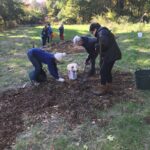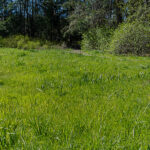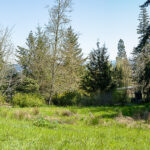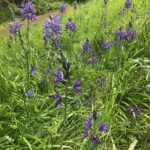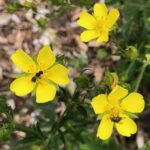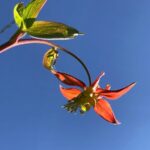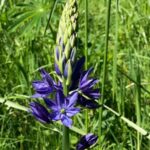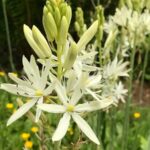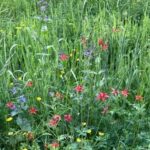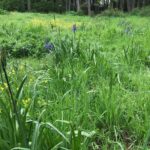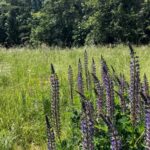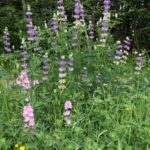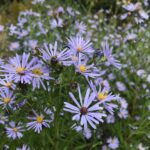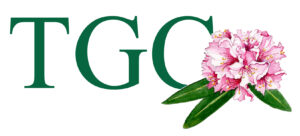The Northwest Native Plant Garden
In 1963, forward-looking members of the Tacoma Garden Club proposed to Metro Parks Tacoma (MPT) building a native plant garden within Point Defiance Park. MPT agreed, and a native plant garden took shape in a ravine at the southern edge of the park. Today, paths wind through two acres of native forest, woodland, and meadow, and by a pond fed by a lively cascading waterfall. A wooden gazebo sited and partly designed by renowned landscape architect Thomas Church is a garden focal point. Throughout the garden, several commemorative benches and chairs provide spots to linger and listen to the sounds of the stream and the creatures of the garden.
The Tacoma Garden Club has been instrumental in the planning and development of the garden and for a number of significant upgrades over the years. The Tacoma Garden Club volunteers work in the garden twice a month from spring through fall, aided by a contractor. In turn, MPT provides many needed maintenance services.
The NW Native Plant Garden (NWNPG) showcases representative native plants from the Pacific Northwest coast, ranging from southern Alaska to northern California, and from the ocean to the foothills of the Cascades and coastal mountains.
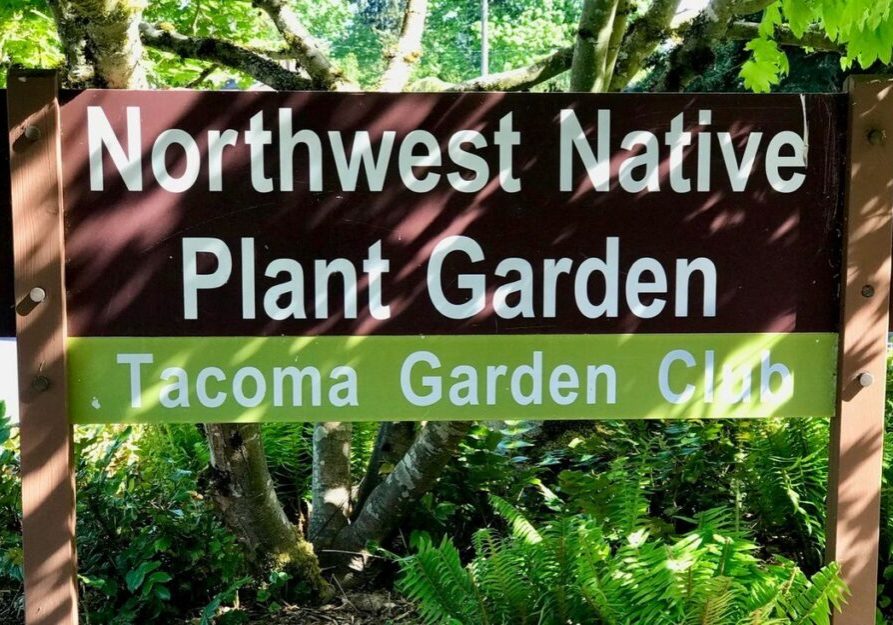
Areas of the Garden
The links below go to the Burke Herbarium or Oregon Flora Image Collection with permission.
Forest
When explorers first sailed past Point Defiance and into Commencement Bay, they would have observed towering, dark, coniferous forests along the shore. Our forest area is typical of Puget Lowland Forests, which are dominated by three tree species – Douglas fir, western red cedar, and western hemlock. Trees downed in storms have created partially sunny openings for bigleaf maple trees to fill in as well as some of the Forest Edge species listed below. One of the garden’s downed trees has become a nurse log – the slowly decaying wood is providing nutrients and homes for young plants.
Douglas fir (Pseudotsuga menziesii)
Western red cedar (Thuja plicata)
Western Hemlock (Tsuga heterophylla)
Bigleaf maple (Acer macrophyllum)
Forest Understory
These species can flourish in the deep shade of coniferous forests but also may be found along partially shaded forest edges and in openings in the forest. Salal, evergreen huckleberry, and sword fern are the three most common understory plants in our forest area as well as throughout Point Defiance Park’s old growth forest.
Salal (Gaultheria shallon)
Evergreen huckleberry (Vaccinium ovatum)
Red huckleberry (Vaccinium parvifolium)
Vine maple (Acer circinatum)
Low Oregon grape (Mahonia nervosa)
Sword fern (Polystichum munitum)
False or wild lily-of-the-valley (Maianthemum dilatatum)
False Solomon’s seal (Maianthemum racemosum)
Star-flowered Solomon’s seal (Maianthemum stellatum)
Trillium (Trillium ovatum)
Giant or sessile trillium (Trillium albidum)
Redwood sorrel (Oxalis oregana)
Siberian miner’s lettuce or Siberian springbeauty (Claytonia sibirica)
Vanillaleaf or deerfoot (Achlys triphylla)
Forest Edge
Along the edge of forests and in forest clearings dwell many plants that thrive where they get both sun and shade at different times of day. Shade helps to keep the soil moister in the dry summer months while sun abets their growth and flowering. Some of these plants also may be found in the deep shade of the forest but usually won’t grow as large or flower as well. Plants in this garden that grow along the forest edges and in openings with partial shade from forest trees include:
Red alder (Alnus rubra)
Paper birch (Betula papyrifera)
Pacific dogwood (Cornus nuttallii)
Beaked hazelnut (Corylus cornuta)
Pacific rhododendron (Rhododendron macrophyllum)
Western azalea (Rhododendron occidentale)
Nootka rose (Rosa nutkana)
Baldhip rose (Rosa gymnocarpa)
Oregon grape (Mahonia aquifolium)
Snowberry (Symphoricarpos albus)
Oceanspray (Holodiscus discolor)
Indian plum (Oemleria cerasiformis)
Red-flowering currant (Ribes sanguineum)
Thimbleberry (Rubus parviflorus)
Highbush cranberry (Viburnum edule)
Oval-leaved viburnum (Viburnum ellipticum)
Ninebark (Physocarpus capitatus)
Red elderberry (Sambucus racemosa)
Blue elderberry (Sambucus cerulea)
Black twinberry (Lonicera involucrata)
Bracken fern (Pteridium aquilinum)
Woodland strawberry (Fragaria vesca)
Trailing blackberry (Rubus ursinus)
Fringe cup (Tellima grandiflora)
White inside-out flower (Vancouveria hexandra)
Forest Groundcover
False or wild lily-of-the-valley (Maianthemum dilatatum)
False Solomon’s seal (Maianthemum racemosum)
Star-flowered Solomon’s seal (Maianthemum stellatum)
Trillium (Trillium ovatum)
Giant or sessile trillium (Trillium albidum)
Redwood sorrel (Oxalis oregana)
Siberian miner’s lettuce or Siberian springbeauty (Claytonia sibirica)
Vanillaleaf or deerfoot (Achlys triphylla)
Pond
Along the margin of the pond are plants that thrive in moist soils found around Pacific Northwest seeps, rivers, streams, and marshes:
Salmonberry (Rubus spectabilis)
Douglas spirea (Spiraea douglasii)
Red-twigged dogwood (Cornus stolonifera)
Pacific wax myrtle (Myrica californica)
Scouring rush (Equisetum hyemale)
Fringe cup (Tellima grandiflora)
Deer fern (Struthiopteris spicant)
Lady fern (Athyrium filix-femina)
Maidenhair fern (Adiantum aleuticum)
Skunk cabbage (Lysichiton americanus)
Meadow
While forest predominates in the south Puget Sound lowlands, extensive open grassland prairies historically grew inland on well-drained, gravelly glacial outwash soils. They were maintained as prairies by Native American tribes through burning to stop the encroachment of trees. European settlers found these prairies easy to adapt to agriculture, and the native prairies and their species, so different from those of the forests, largely disappeared. For the last forty years, dedicated groups have worked to conserve prairie remnants and restore native prairies on old agricultural lands.
In 2014, the Tacoma Garden Club re-landscaped the meadow area, adding a path around the perimeter and planting a collection of native grasses, wildflowers, and shrubs. Today, the meadow echoes the native South Sound prairies. Three Oregon oak trees at the south end and plantings of snowberry, evergreen huckleberry, and Oregon grape shrubs along the meadow edge reflect the oak woodlands often found along the perimeter of native prairies.
A changing array of wildflowers bloom in the meadow from April through October to sustain pollinators and provide color and interest for visitors. Many of these species also bloom in the native prairies, but the meadow’s clay subsoil is not conducive to those prairie species that require well-drained soil or well-spaced, short, bunch grasses with open ground. Grasses, sedges, and rushes form the backbone of the meadow. We fight a continuing battle with non-native species, the seeds of which are carried to the meadow on the wind or birds or people.
Wildflowers
Wildflowers growing in the meadow in 2021, approximately in the order they appear, include:
Western buttercup (Ranunculus occidentalis)
Henderson’s shooting star (Dodecatheon hendersonii)
Great camas (Camassia leichtlinii)
Common camas (Camassia quamash)
Western meadow rue (Thalictrum occidentale)
Sea blush (Plectritis congesta)
Large-leaved avens (Geum macrophyllum)
Red columbine (Aquilegia formosa)
Slender cinquefoil (Potentilla gracilis)
Self-heal (Prunella vulgaris)
River-bank lupine (Lupinus rivularis)
Bigleaf lupine (Lupinus polyphyllus)
Henderson’s checkermallow (Sidalcea hendersonii)
Cooley’s hedgenettle (Stachys cooleyae)
Scarlet paintbrush (Castilleja miniata)
Pearly everlasting (Anaphalis margaritacea)
Common yarrow (Achillea millefolium)
Watson’s willow herb (Epilobium ciliatum)
Oregon willow herb (Epilobium oregonense)
Western geranium (Geranium oreganum)
Western Canada goldenrod (Solidago lepida)
Douglas aster (Symphyotrichum subspicatum)
Native grasses, sedges, and rushes present in the meadow include:
Slough sedge (Carex obnupta)
Small-fruited bulrush (Scirpus microcarpus)
Soft rush (Juncus effusus)
Sitka brome (Bromus sitchensis)
Tufted hairgrass (Deschampsia cespitosa)
Blue wildrye (Elymus glaucus)
Red fescue (Festuca rubra)
Velvet grass (Holcus lanatus)
Kentucky bluegrass (Poa pratensis)

